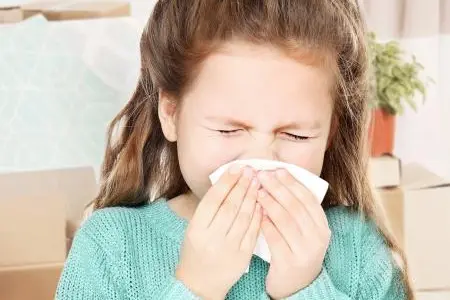PHOTO
Ever wondered why your asthma feels worse in Dubai’s hot summers? Blueair’s General Manager for Middle East & Africa, TR Ganesh explains how the weather plays its part – and offers some tips for asthmatics to survive the summer
Stepping outside for even a few minutes can leave you feeling sticky, while your clothes often seem to be instantly soaked through. But beyond the need for extra hydration and increased laundry bills, the UAE’s legendary humidity brings with it several health concerns.
Those suffering from asthma and frequent allergies are often the worst hit. Hot and humid weather, particularly when the amount of water vapour in the atmosphere crosses 50 per cent, has been linked to increased asthma attacks.
Researchers at the University of Kentucky Medical Center have shown how when patients breathed air that was controlled for temperature and humidity levels, asthmatics faced greater airway resistance than non-asthmatics, while hotter and damper air led to a greater frequency of coughing attacks.
In a separate study of more than 25,000 asthma-related clinic visits, analysts at Children's Hospital of Michigan found that a simple 10% increase in humidity was linked to one extra emergency visit at the clinic, and a 10-degree ascent in temperature brought about two extra asthma visits.
Those findings help explain why asthmatics in the UAE often have such a hard time in the muggy summers. Humidity over the coming weeks is expected to touch 80% in the country’s coastal areas, even as the hazy conditions are set to continue.
Atmospheric moistness levels over 60% offer the perfect breeding ground for mould and dust mites, some of the most typical asthma triggers. Air pollution also increases with a rise in humidity, and ozone molecules, with their detrimental effect on lower lung function, are a particular concern.
However, another major contributor is the temptation to stay indoors at a time the mercury touches its annuals highs. Not only can air-conditioning units harbour up to 1,000 dust mites and 250,000 allergenic dust mite faecal pellets, triggering respiratory allergies, but indoor air is up to five times more polluted than outdoor air, according to the US Environmental Protection Agency. Most people around the world spend 90% of their time indoors and must therefore remain alert to the quality of the air they are breathing.
Indoor air pollution is caused by everyday activities such as cooking, use of cleaning and hair products, air fresheners, candles, open fires and smoking. In addition, outdoor air enters homes and workplaces through ventilation. Exposure to indoor air pollution can lead to a wide range of diseases including acute and chronic respiratory conditions such as chronic obstructive pulmonary disease and pneumonia, lung cancer, ischemic heart disease, stroke and cataract. Polluted indoor air can also trigger asthma and allergies.
Besides seeking medical advice, a number of precautionary measures can help improve indoor air quality and with it, allow asthmatics to breathe easier. These include:
1. Open the window – your indoor air is on average five times more polluted than the outside air.
2. Vacuum frequently and regularly wash beddings and other textiles.
3. Reduce or remove carpets, which trap unhealthy particles such as dirt, fungi and dust mites.
4. Avoid unnecessary chemicals – use natural cleaning products instead.
5. Cut down on the use of perfume and hair spray.
6. Invest in plants – according to NASA, English ivy and Peace lily best eliminate household pollutants.
7. Put a certified asthma-approved air purifier in the rooms, where you spend most of your time. The World Health Association (WHO) considers air pollution to be the single biggest environmental risk to human health with 9 out of 10 people in the world breathing polluted air. However, with a few preventive measures, asthmatics don’t need to be limited by the summer’s extreme temperatures and high humidity.
© Press Release 2019Disclaimer: The contents of this press release was provided from an external third party provider. This website is not responsible for, and does not control, such external content. This content is provided on an “as is” and “as available” basis and has not been edited in any way. Neither this website nor our affiliates guarantee the accuracy of or endorse the views or opinions expressed in this press release.
The press release is provided for informational purposes only. The content does not provide tax, legal or investment advice or opinion regarding the suitability, value or profitability of any particular security, portfolio or investment strategy. Neither this website nor our affiliates shall be liable for any errors or inaccuracies in the content, or for any actions taken by you in reliance thereon. You expressly agree that your use of the information within this article is at your sole risk.
To the fullest extent permitted by applicable law, this website, its parent company, its subsidiaries, its affiliates and the respective shareholders, directors, officers, employees, agents, advertisers, content providers and licensors will not be liable (jointly or severally) to you for any direct, indirect, consequential, special, incidental, punitive or exemplary damages, including without limitation, lost profits, lost savings and lost revenues, whether in negligence, tort, contract or any other theory of liability, even if the parties have been advised of the possibility or could have foreseen any such damages.











